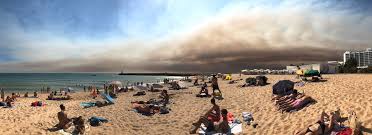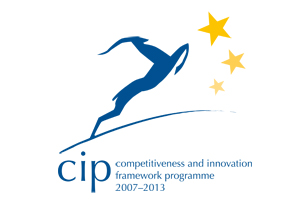Knowledge Networking Portal for Sustainable & Responsible Tourism










 Monchique Natura 2000 Fire 2018 – An Extreme Weather Vane for Sustainable Development
Monchique Natura 2000 Fire 2018 – An Extreme Weather Vane for Sustainable Development
Monchique, 28th August 2018
I can tell you the story...
...of this six day inferno as a resident who’s home and business were burnt out in 2003, or, in the 3 decades of my working life as a European and global expert on sustainable development, you could hear of all the forestry, tourism, agriculture and spatial planning policy lines and funding programmes that led to this summer’s devastation of the prime biodiverse habitat of this Southern jewel of the European Natura 2000 network. Equally, as an expert in climate change mitigation and adaptation policy and implementation in the tourism sector and protected areas, I could give you a vision of the future to come for these last precious reserves of nature across the globe …

Smoke on the Horizon – But fire can travel through this Natura 2000 paradise habitat at a kilometre a minute in these events – way faster than you can run …
The Monchique Natura 2000 Zone, Algarve, Southern Portugal
The area that burnt in southern Portugal from Friday 3rd 1.30pm to Thursday 9th and beyond is renowned for containing 75% representative species of the entire country. In other words, if you protect the natural Monchique habitat in its traditional agricultural form, you will preserve in one step three quarters of Portugal’s biodiversity resource. Instead, what happened was a fire that started near the coast spread to the pristine habitat of Picota and Odelouca, and once again, mass degradation – 21,000 hectares, (nearly. 50,000 acres) of forested areas occurred over 6 nights and 7 days.
Fought at its height by 1300 firefighters, 13 planes and helicopters, with army, police and emergency care support, Monchique was cordoned off and local populations evacuated as and when the fire grew its tendril fronts across the back of the mountain, engulfing forested valley after valley. Smoke and ashes fell in all directions as the gusting circular swing of the fire-driven 40-60 kpm wind pattern took hold of the region, and the smoke plumes were recorded from space …
A contiguous uniform monoculture – endless plantations of eucalyptus globulus, the green petro-dollars of the Portuguese pulp and paper economy, burn like the Formula One of tree species, and with years of public finance even in the aftermath of the 2003 fires, eucalyptus is still planted in abundance . It is still the most planted tree in Portugal, driven by the market for quality cardboard and paper that comes with the new Amazon habitat of the global postal service. . Clearly the fire costs are external to the forestry pulp and paper companies, private enterprise again making the state clean up its dirty money business with the financial bottom line the primary driving motive between government and enterprise.
The True Cost Understanding of this Extreme Weather Event
This civil cost is high in terms of fringe people who’s livelihoods are perhaps more precarious – those living in the forests that just burnt, tending goats, organic gardening, urban exiles, living in marginal land. Although this time, as in California and in Greece, the ferociousness of the fires singed the urban centres, and town’s people were also counting the financial costs of extreme fire events. Thick ash fell on the tourist towns of Portimao and Alvor 30 kilometers away, the mountainous hinterland looked like a giant bonfire at night.

But it is the cost of the loss of biodiversity that is likely to be the lasting tragedy of this event and could be seen as immeasurable, as this area still has not been fully investigated and catalogued in the richness of its plant and insect species. Let alone the damage this fire has done to the fragile habitat of the Iberian lynx and Bonelli’s eagle, two key IUCN red-listed species on the brink of extinction. This fire needs to be accounted for in these ways, whilst still applauding the zero death toll the authorities achieved with their disjointed last minute control and containment system. Who do we hold responsible for that, what should have been done instead, and what can be done now in retrospect?
Learning to Adapt and Mitigate
What do we learn each time the land floods, or burns, particularly in areas where we wish to protect both people and nature? Sustainability thinking for Monchique – and all other southern European forested areas - must include the scenario of ever increasing likelihood of a shorter fire cycle now in evidence – forests are now threatening to burn every 10 years, not every 20-25 years as evidenced in a former, less mono-cultured and abandoned landscape when the climate was more benign. This shortening of time between events is not allowing the indigenous tree cover to recover, and there is visual evidence in abundance of deteriorating landscapes and a depleted biodiversity. Once again, ecotourism In the Monchique Natura 2000 Zone has taken another body blow, and clearly more will be coming.
Extreme Weather Events as Infotainment in an Age of Uncertainty
As ever, this was not the focus of the discussion. Last years’ horrific loss of over 80 lives in two events in Portugal and the loss of over 60 lives in Greece the month before gave this fire a new dimension – fear and hysteria was spread as quickly as the flames, fanned by the mass media interest. This fire, like acts of war, terrorism or murder, was turned into endless news reel as infotainment for global consumption, whilst on the ground there was a complete fragmentation of local communication – road blocks cut people off from their own homes or friends and family’s houses – phone lines were down, even mobile communication failed on some days. It took four days to restore broadband TV to the main centres, and the rural internet is still being restored where I am living.
Should you be unfortunate enough to live though such an event, even if your house or property isn’t damaged or destroyed, you face evacuation, packing up key belongings, securing your house, all in an extreme hurry, in a 40 0 C heatwave, with panic spreading, children in anxious excitement, and ashes falling around you as the billowing smoke towers on the near horizon, white and grey then red and angry in the sunset plume. In the burnt areas, at first the soil is white with hot ash, and the blackened sticks of twisted tree trunks smoulder on, the air acrid and sooty. You won’t see many birds, insects or animals in these wounded areas for a while, and when they do return, the habitat is weaker, the numbers fewer.
SDG 2030 as the Context for our Own Regions and Destinations - The Need for Resilience Thinking
Resilience is the word that stands outs as I witness this third extreme weather event in my time on this mountain – first a year’s rainfall in 6 hours in one night in October 1997, then the devastating 10 day fire of that destroy 83% of Monchique Natura 2000 zone in 2003, and now this 6 day, 150 kilometer, 24,000 hectare fire zone follow up in 2018. Sustainability is about humans being resilient in the face of extreme weather events and their aftermaths.
Our entire planet is becoming hot, flat and crowded – climate change, mono-cultured forest and folk, and 8 billion of us by 2030 all looking for somewhere worthwhile to live or visit. This perverse degradation of our super natural and cultural heritage is happening in a piecemeal but progressive pattern, exponentially taking us to a variety of critical tipping points in the process we call Global Change. The current state of many regions and destinations – both urban and rural - is already a story of struggle and resilience. For others their time will surely come as the global system is now so interrelated- unless we see a radical departure from business-as-usual and put sustainable development first.
We all now need to act collectively as a global species, thinking above national or self-interest, and start taking responsible decisions at work, at home and on holiday when it comes to how we spend our time and money and what we choose to buy or make happen. The green or ethical choice is no longer an option, but a necessity if we are to see our Mother Nature survive our collective greed, selfishness and short-sighted money-making. That’s the message from this burnt and blackened front line about (y)our future …
Gordon Sillence
Tourism 2030 ICT Director
Ecotrans European Network for the Sustainable Development of Tourism, vice President
Janela Aberta 21” Centro de Educação para o Desenvolvimento Sustentável, coordinator
See also: Tourism 2030 News: Copernicus climate data boosts Europe's Tourism sector
|
|
|
| Address | Casa Velha, Abrigo da Serra, Marmelete 8550 Monchique, Portugal |
|---|---|
| Keywords | forests, fire |
| Target group(s) | Destinations , Education, Research, Consultancy , NGOs, Partnerships, Networks , Governments & Administrations |
| Topics | Climate Change - Energy and Resource Efficiency , Natural Heritage & Biodiversity |














































